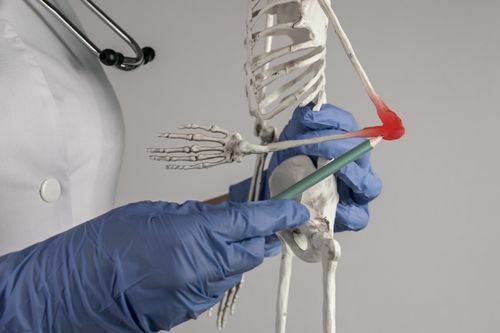Table of Contents
There are several important functions that human bones perform in the body. They are primarily in charge of mobility, erect posture, structural outline, and somatic stiffness (e.g. bipedal gait). Bones can protect internal organs and other body systems because of their stiffness.The general archaeological image of the post-classical era, which can be best understood through the study of bones, under represents elites in some cases and the majority of people who receive little attention in the written records.
Definition of study of bones

Osteology deals with the study, identification, and analysis of bones, including their structures and functions. There are two main subdivisions of osteology-human and animal.
Human osteology
There are 206 bones in the human body, and they are divided into four different categories based on how they are shaped: long bones, short bones, flat bones, and irregular bones. Compact bone is located on the surface of bones and has a solid and dense structure. Spongy bone is a porous substance and is found inside the bones. These are two different types of tissues that make up bones.
Animal Osteology
Bones from animals can have different structures, densities, and mineral contents than those from humans. For instance, the hollow bones of birds include air sacs that allow the birds to breathe enough oxygen to fly. Other animals’ teeth will form differently depending on their food. For instance, herbivores like cows have flat, wide teeth that aid in the chewing of plant material.
Various functions performed by human bones
- Bones act as a frame to support the body and protect our organs like the heart and lungs.
- Muscles, tendons, and ligaments attached to our bones, help in making movements.
- Producing blood cells and platelets that are important for the formation of new blood and healing wounds.
- Bones store minerals like calcium and phosphorus, as well as energy reserves like lipids.
Types of bones

There are five types of bones
- Flat
- Long
- Short
- Irregular
- Sesamoid
Flat bones
The skull, thoracic cage, and pelvis all contain flat bones, including the occipital, parietal, frontal, nasal, lacrimal, and vomer all come under the category of flat bones. Flat bones serve the purpose of shielding internal organs, including the heart, brain, and pelvic organs from injury. Flat bones are somewhat flattened and act as a shield of defense as well as a large area for muscles to attach to.
Long bones
The femur, the longest bone in the body, as well as the comparatively little bones in the fingers are among the long bones, which are longer than they are wide.
Long bones help in sustaining body weight and enable movement. The tibia, fibula, femur, metatarsals, and phalanges are among the lower limb’s and upper limb’s long bones, which are predominantly found in the appendicular skeleton (the humerus, radius, ulna, metacarpals, and phalanges).
Short bones
Short bones are the same in length and width. Short bones that are found in the wrist and ankle joints offer support and some movement. Short bones include the tarsals in the ankles (calcaneus, talus, navicular, cuboid, lateral cuneiform, intermediate cuneiform, and medial cuneiform) and the carpals in the wrist (scaphoid, lunate, triquetral, hamate, pisiform, capitate, and trapezium).
Irregular bones
Irregular bones have different shapes and structures, they fall outside of all other categories (flat, short, long, or sesamoid). They frequently have an intricate shape, which aids in protecting internal organs. For instance, the uneven vertebrae of the vertebral column shield the spinal cord. The pubis, ilium, ischium, and the uneven bones of the pelvis shield the organs in the pelvic cavity.
Sesamoid bones
Sesamoid bones are tendons-encased bones. The tendons of the wrists, knees, and feet frequently contain these tiny, spherical bones. The purpose of sesamoid bones is to shield tendons from strain and abrasion. An example of a sesamoid bone is the patella, sometimes known as the kneecap.
Applications of osteology
Osteology is utilized in several applications since bones can reveal a lot about a person, including
- Elucidating the diet and evolution of humans across time, as well as diseases they may have incurred.
- Identifying relics discovered at a historical location.
- Looking into a crime scene
- Demonstrating the historical movement of people between different locations
Osteopathy vs Osteology
Osteopathy and osteology should not be mistaken to be the same, even though they sound extremely similar. Osteopathy is a form of complementary medicine that emphasizes the importance of the musculoskeletal system to human health and strives to treat the ‘whole patient’ (in mind, body, and spirit).
Key takeaways
- Osteology deals with the study, identification, and analysis of bones, including their structures and functions. There are two main subdivisions of osteology-human and animal.
- There are five types of bones: flat, short, long, irregular, and sesamoid. Types of bones are classified together based on common traits like shape, location, and other characteristics.
- Studying the food and historical evolution of humans, as well as any diseases they might have developed. Identifying relics discovered at a historical location. Looking into a crime scene, etc., are some applications of osteology.
Did you find this blog informative? If so, please share your thoughts in the comments section below. Click here to contact us for more information on the study of bones. We would be happy to assist you with your queries.
Liked this blog? Read next: Top medical universities in Australia
FAQ
Q1. Which is the longest bone in our body?
Ans-One of the most studied bones in forensic medicine and human anatomy is the femur.
Q2. Which is the smallest bone in our body?
Ans- The smallest bone in the human body is the stapes
Q3. Are teeth a bone?
Ans- Teeth and bones look similar and share some similarities, including being the hardest substances in your body. But teeth aren’t bones. This misconception might have arisen from the fact that both contain calcium. Our bones and teeth contain More than 99 percent of your body’s calcium. Despite this, the makeup of teeth and bones is quite different.






